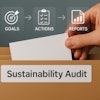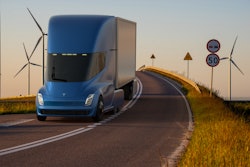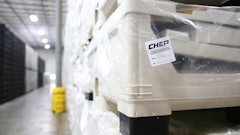
Adopting environmentally friendly processes and practices has become elemental to businesses large and small seeking to achieve a more impactful sustainability program. One of the principal areas where facilities can greaten their environmental impact is through proactive power management that improves forklift fleet optimization while boosting sustainability metrics along the way. Yet the vital partnership between energy, operations and sustainability is frequently overlooked.
Every facility has a power profile that relates to the duty cycle of a given operation. That output is the power you need to achieve productivity targets for the given site. Applying this perspective enables you to properly allocate resources in an efficient manner that prioritizes the planet, your people, and profits. In many facilities, equipment is underutilized. This drives up cost and inherently decreases the sustainability of the site. This is just one puzzle piece to remember when we consider what a responsible use of energy looks like. The converse is undersizing your fleet, which will decrease productivity and profit. This is why the power profile is so critical to understand.
When you look at an organization’s energy policy, the first priority should always be to right-size the power to the applications based on where that facility falls on the motive energy continuum. Once right sized, this can be directly translated to the facility forklift fleet both with the type and quantity of equipment needed to accomplish the task. In reality, power management is the beginning of any successful material handling fleet optimization effort.
Optimizing the fleet to the right number and type of equipment needed to do the job efficiently, directly impacts sustainability in three areas of:
- People: Safety: The right tool for the job is safer, easier, more convenient and less stressful for the operator
- Planet: Sustainability: Not just using less but measuring your responsible use of energy
- Profits: Savings and Productivity: Less equipment = less capital investment; The right energy profile = increased productivity
When done well, power management and proactive maintenance will improve the efficiency of your fleet, while helping you achieve the best sustainability metrics possible. Those metrics may include everything from cubic feet of hydrogen used per day and gallons of water consumed to reductions in kWhs of energy used.
With this knowledge, here are a few strategies to consider when it comes to aligning your facility’s power, fleet and environmental footprint:
Analyze and take action based on the power profile of the site. This is key in making decisions that will impact the planet, people, and profit for your site. When incorporating the usage characteristics against your productivity targets, required equipment, and required operators, you’ll find a multitude of options for a site that all drive different cost considerations and sustainability metrics. For example, a site previously changing out batteries might find the highest level of optimization by utilizing a lithium-based solution instead. In this case, it would reduce the carbon footprint of the site.
Understand your facility and your culture. Onsite facility culture for maintenance and compliance absolutely determines how a customer should go about their power management choices. Can you drive accountability at your facility, or is it difficult to manage because of turnover? When it comes to power management processes, this is an important consideration. Different types of battery options will be a better fit when considering the cultural behaviors of an organization. This also extends to safety concerns, as a site with higher turnover or an inability to hold operators accountable may not be a good fit for frequent battery changes. The power profile might suggest that as the most efficient and optimized system for a given site, but you have to understand the culture you’re fitting solutions into if you want to avoid unnecessary safety risks.
Don’t neglect your power source. This can raise costs when it comes to repairs to the power source along with the equipment it’s powering, lost productivity, and a reduction in sustainability metrics. Ensure systems are in place to supervise your assets and drive action when needed. Batteries are the last thing people think about until they stop working correctly. You can’t necessarily see them wearing down and the often-lagging indicator of capacity fade is realized when it is too late. With time, a damaged battery will drive down sustainability metrics as more and more energy is lost through increased resistance resulting in additional heat generation and other cascading effects that lead to early failure.
Balance supply and demand: Among several considerations, a site should analyze if they could reduce operator and truck count, increasing the productivity of each individual truck and operator so that a higher utilization of the equipment, and subsequently the battery is ascertained. This will save the site money on operational costs by reducing the maintenance spend as well as the operator cost among other things. Another consideration for the site would be to reduce the size of the battery, in an instance where the power profile does not demand a larger battery. If the site cannot reduce the number of trucks or operators to achieve the productivity target, then the site could reduce the capacity, where warranted, of the battery to align more with the demand of the application. This will save the site money on the upfront spend, but also reduce long term spend on factors like AC power infrastructure and consumption, as well as maintenance costs.
A corporate energy policy that includes material handling power management is not just a nice to have, it is a necessity. We all have a responsibility to our People, Planet and a fair Profit for our organizations. Paying attention and evaluating business decisions in alignment with these guiding principles will ensure we make smarter business and sustainability choices. Developing a comprehensive energy policy that aligns your organizational goals, measuring your baseline and continued progress annually while right sizing your power to your forklift fleet will put you on the right path for better outcomes.



















